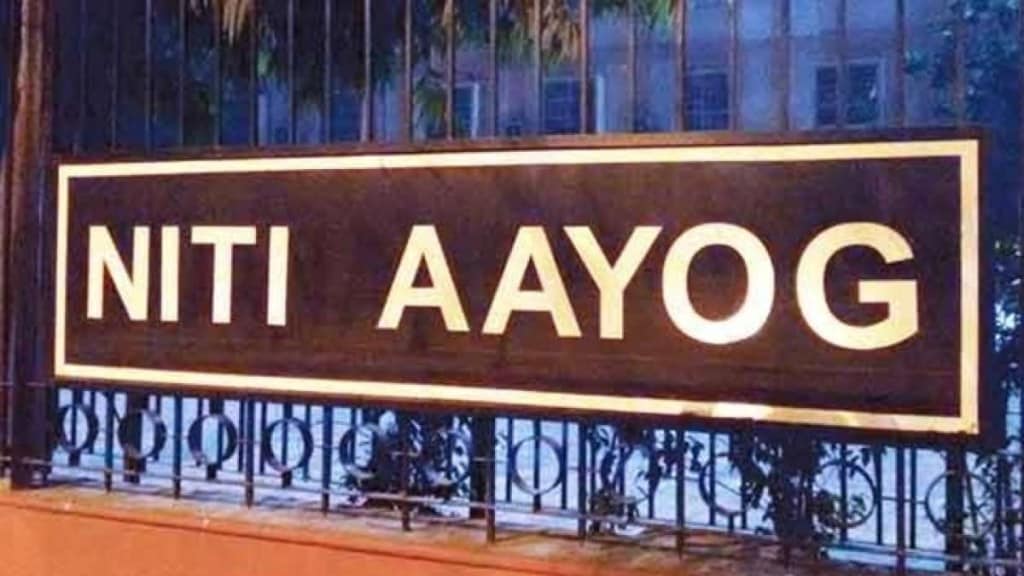In a departure from the government’s stated position, the top official from the Niti Aayog on Thursday said India should be part of the China-backed Regional Economic partnership (RCEP) trade bloc.
“India should be a part of RCEP (Regional Comprehensive Economic Partnership) and CPTPP (Comprehensive and Progressive Agreement for Trans-Pacific Partnership) and become a member,” chief executive officer of the Niti Aayog B V R Subrahmanyam said at en event organised by Assocham.
India had negotiated for six years to be a part of RCEP but in 2019 backed off from signing the agreement as it would have been in effect a free trade agreement with China. RCEP includes 10 ASEAN group members (Brunei, Cambodia, Indonesia, Malaysia, Myanmar, Singapore, Thailand, the Philippines, Laos and Vietnam) and their six FTA partners – China, Japan, South Korea, Australia and New Zealand.
Subrahmanyam, who is a former commerce secretary, also said that India has not captured China-plus-one opportunity as much as it could have. Countries like Vietnam, Indonesia, Malaysia, Turkey, and Mexico have probably benefited more from ‘China plus one’ than India, he said. As Donald Trump who called India a “tariff king” is set to return as the US president after an emphatic electoral victory, Subrahmanyam also said that India will not benefit from global trade unless it brings down its high tariffs. India’s average tariffs for industrial and farm foods have escalated in recent years, a development many who advocate liberal trade have denounced.
It is being widely perceived that in return for mitigation of the US threat of additional tariffs on items imported from China, India and other countries, India may have to grant the world’s largest economy increased market access via tariff cuts for a set of goods, including some farm produce.
The Niti Aayog CEO’s comments also come on the heels of the Economic Survey 2024 suggesting integration of India with China;s supply chain. Top government functionaries including finance minister Nirmala Sitharaman, however, have stressed the need for keeping in mind the “sensitivities” associated in trade with neighbouring coounties.
Barring China India either has FTAs with almost all the other members of RCEP. With New Zealand FTA is being explored while with Australia negotiations for a Comprehensive Economic Cooperation Agreement (CECA) are in advanced stages. The Economic Cooperation and Trade Agreement with Australia is already operational.
In September the World Bank in its India Development Update has also recommended reconsidering joining RCEP, citing potential boosts in trade, investment, and GDP growth. India-China bilateral trade of $ 118 billion is already skewed heavily in favour of China and the deficit with the northern neighbour is $ 85 billion. According to an analysis by Global Trade Research Initiative (GTRI) after signing RCEP China has walked away with all the gains vis-a-vis other partners.
ASEAN’s trade deficit with China has jumped from $ 135.6 billion in 2023 from $ 81.7 billion in 2020. Also, the trade deficit of major ASEAN countries Singapore, Thailand, Vietnam, Philippines has steadily increased.
Japan’s trade deficit with China has increased to $ 41.3 billion in 2023 from $22.5 billion in 2020. South Korea may face a trade deficit for the first time with China this year.
“This pattern suggests RCEP gains to China over others will increase as full concessions take place and the economic benefits of RCEP are disproportionately skewed toward China, further validating India’s apprehensions about unfair competition,” the World Bank said.
India was never part of the CPTTP negotiations which is a trade agreement between 12 countries including Japan, Malaysia, Vietnam, Australia, Singapore, Brunei, New Zealand, Canada, Mexico, Peru, and Chile. The US , which was also part of the negotiations under President Barack Obama, withdrew in 2017 on the very first day in office of Donald Trump.


